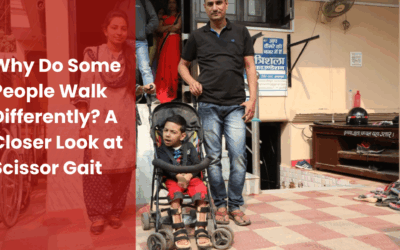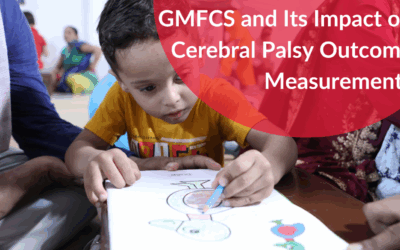What if your child’s journey was based not on their limitations but on their potential?
For parents of children with cerebral palsy, a diagnosis can bring a whirlwind of need, expectation and overwhelming circumstances, but there remains hope! The emphasis of care will never be to cure a child’s condition but to help a child lead a fulfilling, independent life. It is why the management of cerebral palsy is paramount.
Whether it be improving mobility, enhancing communication, reducing complications, or enhancing or maintaining emotional well-being, good management will maximize opportunities for growth with barriers transformed into opportunities. Children with cerebral palsy, through good support systems or through tailored management interventions, can thrive in their own individual ways.
In this guide, we will examine the management goals for children with cerebral palsy, treatment approaches based on the types of spasticity, how we manage abnormal movements as children develop, as well as the importance of taking a multi-disciplinary approach to treatment. Whatever your role—parent, caregiver, health-care provider—learning about the management of cerebral palsy is fundamental in empowering children with the ability to live their lives.
Goals of Cerebral Palsy Management
Each child is different, and each child’s care is different. The goal for the treatment is not to “fix” the child’s cerebral palsy problem, but to assist the child, and their families and caregivers, in reaching their full, life-long potential in all domains of development.
The aim is to create opportunities for progress facilitated by a multi-disciplinary approach to therapy, support services, and assistive equipment. The objectives can be grouped into four fundamental categories:
Improve Mobility and Independence
Naturally, a primary aspect of managing the symptoms of cerebral palsy will be to maximize the child’s ability to move and function independently. This is usually through a customized cerebral palsy physical therapy program, designed to focus on building muscle strength, balance and coordination. Children may also benefit from the use of mobility aids including: walkers, orthoses, or wheelchairs, based on their unique presentation.
These are not just about moving around; they provide children with a chance to complete functional tasks, community participation, and most importantly, a sense of independence and confidence. Providing opportunities for children to perform self-care tasks such as dressing, eating, & brushing their teeth can help build a sense of independence right from the start.
Enhance Communication and Learning Abilities
Children with cerebral palsy frequently encounter difficulty with speech, language, and learning. Speech therapy can provide children with the skills needed to improve articulation and processing of language. For children with more involved impairments, augmentative and alternative communication (AAC) tools such as picture boards, speech generating devices (SGD), provide other methods to communicate needs and feelings.
Alternatively, children may receive services in a special education format, or in a more personalized learning approach, which help all children access knowledge in their unique and individual ways. When communication barriers are removed, children have the opportunity to be involved in the classroom as well as the social setting.
Emotional Support and Social Development
Physical and cognitive therapies are very important, while it is equally important to address the emotional and social development of the child. Inclusive play and group activities will support the interaction with peers and improve social skills. Children will benefit from psychological counselling, or behavior therapy if they experience difficulty with anxiety, frustration, emotional regulation, or behavior.
Being involved in the community through events and activities, or involving them in school or local support groups will provide the children with a sense of belonging, pride in being included with others, and reinforce and elevate their sense of self-esteem. For children with cerebral palsy, emotional resilience is a successful tool to face the challenges of life with strength and optimism.
Prevent Secondary Complications
Managing individuals with cerebral palsy effectively requires not only direct treatment but also the prevention of secondary complications, which may stem from both limited movement and abnormal muscle tone. Regular orthopedic checks are necessary to monitor for scoliosis, joint deformities, or possible joint contractures.
For people to maintain a healthy weight and avoid both obesity and malnutrition, regular nutrition evaluation and counseling are essential; these conditions can exacerbate physical limitations. Considerable time should be spent focusing on techniques to avoid pressure sores, skin breakdown, or blistering which occur with lower levels of mobility, along with regular skin care routines and appropriate positioning.
In looking at these points proactively, the overall health of the individual will be maintained and the quality of life will be improved greatly.
Management by Spasticity Type
Spasticity represents the most frequent type of cerebral palsy, causes alterations in muscle tone, and can lead to muscle stiffness. Management will rely upon the classification and level of spastic involvement.
Spastic Hemiplegia
It affects one side of the body – either the right or left side. Children with spastic hemiplegia may develop a preference for using the non-involved side, resulting in decreased use of the affected side.
Useful strategies for managing cerebral palsy are:
- Constraint-Induced Movement Therapy (CIMT): makes the child use the affected side by constraining the use of the stronger side.
- Targeted Physical Therapy: exercises that strengthen the affected limb and improve coordination and overall motor skills in the affected limb board.
- Occupational Therapy: enhance fine motor skills especially using the hand.
Spastic Diplegia
In this case, the legs are affected more than the arms. The children’s ability to walk is impaired because their legs are often “tight” due to muscle stiffness.
The successful management options include:
- Stretching, strengthening and bracing: To minimize muscle contractures and encourage a normal range of motion.
- Gait training: This includes treadmill training, walker training and training to improve balance.
- Botulinum Toxin injections: This can decrease spasticity in some muscle groups and help with movement.
This type will often require surgery for management of cerebral palsy when conservative methods can no longer assist. Selective dorsal rhizotomy (SDR) is one surgical intervention that can improve walking ability, by decreasing stiffness in the legs.
Spastic Quadriplegia
A very severe form of spasticity, this type affects all four limbs and frequently has accompanying intellectual and sensory impairments, too.
In the complete management of cerebral palsy, the following things may be required:
- Mobility aids: Wheelchairs, seating systems, and orthoses (braces)
- Feeding: Due to oral-motor coordination, a feeding tube may be required or a specialized diet
- Posture and Scoliosis management: regular orthopedic assessments and custom positioning systems
- More Assistive Communication Devices: Speech Generating devices for kids with significant speech impairments
Children who have spastic quadriplegia may have to deal with the medical management of cerebral palsy in a number of situations, including respiratory and nutritional needs!
Management of Abnormal Movements
Some children show dyskinetic or athetoid movements without control and with fluctuating muscle tone. Treatment of symptoms requires both therapy and medical options.
Role of Speech Therapy
- Provides promotor control to maximize chewing, swallowing, and speaking.
- Expands communication often using AAC.
Medications
- Baclofen: works on the spinal cord to decrease stiffness.
- Trihexyphenidyl: It is used to manage dystonia and also improve fine motor control.
- Benzodiazepines: can assist in managing spasticity and involuntary movements.
All medications are part of the medical management of cerebral palsy. With this management, the child will need to have side effects monitored closely.
Conclusion
Effective cerebral palsy management focuses on enhancing ability, not fixing disability. With the right combination of therapy, medication, assistive tools, and, when needed, cerebral palsy surgery, children can make meaningful strides in mobility, communication, and independence.
Every child’s needs are different, which is why a multidisciplinary approach is essential. At the heart of it all are parents and caregivers, who help turn treatment plans into everyday progress.
Looking for the best cerebral palsy treatment in India?
Contact the Trishla Foundation today and explore our specialized care for cerebral palsy in children.







